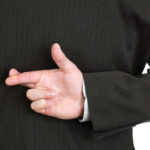 In a 2020 Reuters article (here), authors Ann Saphir and Lindsay Dunsmuir note that the Federal largesse of trillions of dollars currently being spent to address the inevitable fallout from sidelining millions of employees and businesses is far different from 2005 – 2009 when the financial and real estate markets fell into the abyss, causing the Great Recession.
In a 2020 Reuters article (here), authors Ann Saphir and Lindsay Dunsmuir note that the Federal largesse of trillions of dollars currently being spent to address the inevitable fallout from sidelining millions of employees and businesses is far different from 2005 – 2009 when the financial and real estate markets fell into the abyss, causing the Great Recession.
Back then, the government, the press, and many in the public, measured deservedness for bailout funds by the metric of “moral hazard” – i.e. whether giving financial assistance to certain groups would be viewed and encouraging “bad behavior”.
For example with the advent of “no-doc loans” and “liar loans”, borrowers were able to qualify for home loans priced far beyond their ability to repay. At the time, the lenders and mortgage brokers were able to convince borrowers to “bite off more than they could chew” because if they got into trouble, they could either refinance the home, or resell it. Of course, this advice was based upon the theory that real estate does not go down in value.
But in 2007+ that is exactly what happened. Values tanked, thus resulting in borrowers being unable (a) to refinance – because they had no equity, and (b) to resell – because they were “underwater” i.e. their mortgage exceeded the value of the depreciated home. When that occurred, it meant that to convey title, the seller had to bring money to the closing table. This is what came to be known as “negative equity”. Thus, entered the era of the short sale.
So when the Great Recession hit, federal bailout funds were not available to borrowers who had engaged in “moral hazards” i.e. they had fudged their numbers to lenders (or were viewed as having done so), and ended up with a home that could not be refinanced or resold. To make matters worse, banks were now chastened, and having seen the light, immediately began to raise their lending requirements to a point that few folks could qualify.
In the end, however, it appears that the yardstick of “moral hazard” was never really applied to the Big Banks, even though they were patently culpable by disregarding common sense underwriting and instead making loans to anyone who could fog a mirror.
The reason for the frivolous lending was simple; lenders sold their loans into the private secondary market, where investors, hungry for higher returns, bought these securities as if they were spun gold. So the Big Banks no longer cared about the financial bona fides of their borrowers, since they no longer carried the loans – borrower defaults became someone else’s problem. And the rating bureaus, like Moodys and S&P, became enablers in the ruse, by telling investors they were buying “investment grade” products, when they weren’t. See articles here and here.
And what became of the Big Banks who created this Ponzi Scheme? Well, the political decision was made that “moral hazard” would have to take a backseat to financial stability. In other words, the perps were bailed out for the good of the country.
But today, the picture is far different. The only fault that can be assigned to the travails of the American people is an errant virus, and it is wreaking havoc to consumers and businesses alike.
It remains to be seen whether Main Street will receive the same help from the government as Wall Street. Unfortunately, even though “moral hazard” is absent this time, the calculus ultimately remains the same: The loss of a Big Bank may still be viewed as more worthy of a bailout than the neighborhood Mom & Pop grocery. ~Phil








